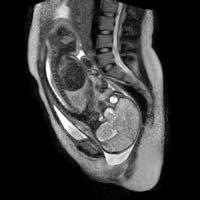Direct resonance delivery

For the first time a delivery has been followed using this technique
Researchers from the Charité Hospital in Berlin and the Faculty of Medicine have followed a birth through magnetic resonance imaging. This is the first time that something like this has been achieved, and they have had to use a special Philips scanner to ensure that their mother had enough space and was comfortable. It took the team two years to develop this scanner.
Thus, throughout the whole process and in detail, the movements performed by the child through the birth canal, his heart beats and his mother's pelvis have been observed. The main objective is to know well the process to know why so many caesareans need to be done. In fact, although the WHO estimates that the cesarean rate should be less than 15%, in many places this rate is exceeded. For example, in public hospitals of the ACBC 13.23% vs 29.6% in private hospitals.





